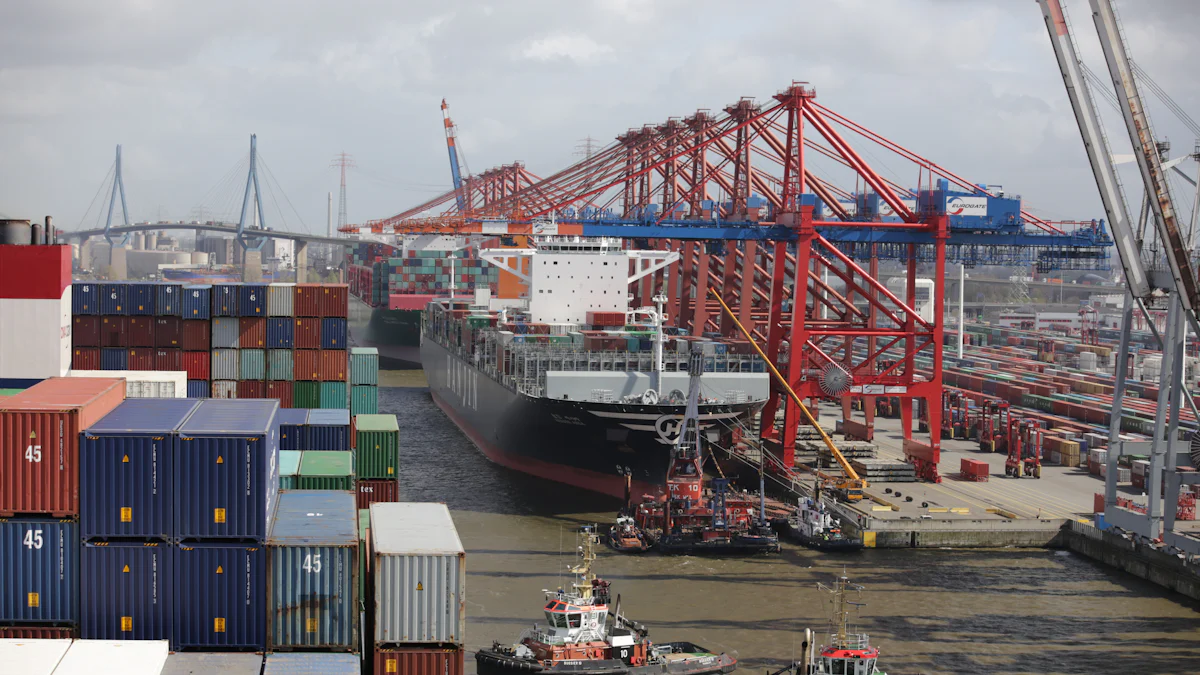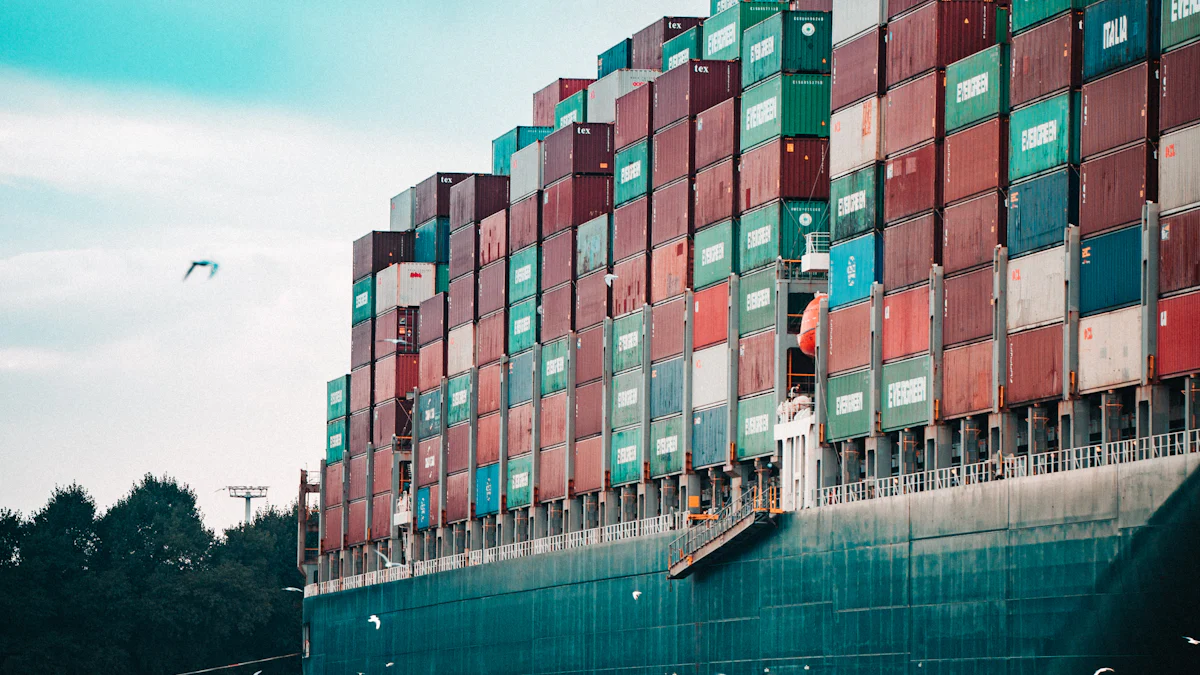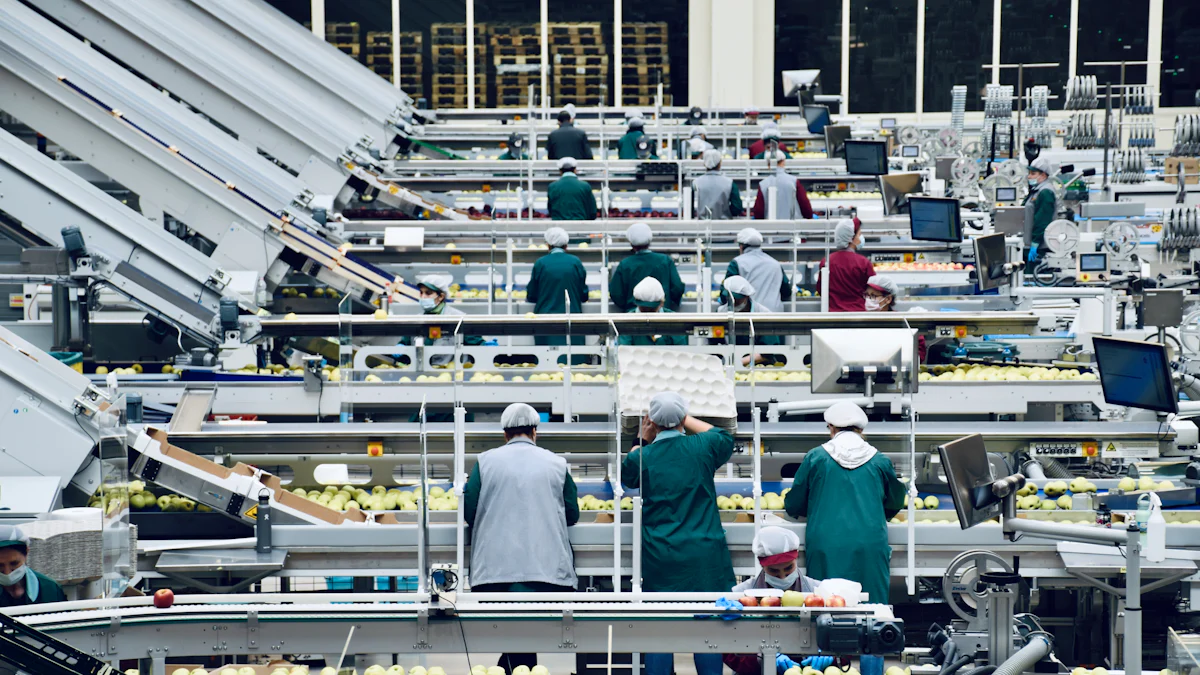Comprehensive Guide to End-to-End Logistics for High-Tech Manufacturing

Logistics holds immense importance in high-tech manufacturing. Efficient logistics ensure seamless operations and provide a competitive advantage. The semiconductor shortage crisis has highlighted the critical role of end-to-end logistics in maintaining the flow of essential components. High-tech logistics involve complex and sophisticated processes that require specialized technology for greater efficiency and profitability. Businesses aiming to grow and gain competitiveness must integrate advanced logistics solutions into their operations.
Understanding End-to-End Logistics
Definition and Scope
End-to-end logistics covers every step in the supply chain. This includes planning, procurement, inventory management, transportation, and delivery. Each stage aims to ensure products move smoothly from suppliers to customers.
Key Components of End-to-End Logistics
Several key components make up end-to-end logistics:
Planning: Forecasting demand and planning resources.
Procurement: Sourcing materials from reliable suppliers.
Inventory Management: Keeping track of stock levels.
Transportation: Choosing the best modes of transport.
Warehousing: Storing goods efficiently until needed.
Distribution: Delivering products to customers on time.
Differences Between Traditional and High-Tech Logistics
Traditional logistics often rely on manual processes. High-tech logistics use advanced technologies for greater efficiency. For example, software-controlled warehouses emerged in the 1980s and 1990s. These warehouses use sensors and automation to streamline operations. Just-in-time inventory systems also became popular in the late 20th century.
Importance in High-Tech Manufacturing
High-tech manufacturing depends heavily on efficient logistics. The right logistics strategy can boost production efficiency and maintain high-quality standards.
Impact on Production Efficiency
Efficient logistics reduce delays in production lines. Just-in-time inventory ensures that materials arrive exactly when needed. This minimizes storage costs and reduces waste.
Role in Quality Control
Quality control starts with reliable suppliers. Advanced tracking technologies monitor each component's journey through the supply chain. This helps identify issues early and maintain high standards throughout production.
Key Stages in the Logistics Process

Procurement and Supplier Management
Selecting Reliable Suppliers
Selecting reliable suppliers forms the backbone of end-to-end logistics. High-tech manufacturing requires components that meet strict quality standards. Companies must evaluate potential suppliers based on their reliability, quality, and delivery timelines. A thorough vetting process ensures that only trustworthy suppliers become part of the supply chain.
Managing Supplier Relationships
Managing supplier relationships is crucial for maintaining a smooth flow of materials. Regular communication helps address any issues promptly. Building strong partnerships with suppliers can lead to better terms and more reliable service. Effective management reduces disruptions and enhances overall efficiency in end-to-end logistics.
Inventory Management
Just-In-Time Inventory
Just-in-time (JIT) inventory minimizes storage costs by receiving goods only when needed for production. This approach reduces waste and ensures fresh stock availability. JIT inventory requires precise planning and coordination with suppliers to avoid delays.
Inventory Tracking Technologies
Advanced inventory tracking technologies play a vital role in end-to-end logistics. RFID tags, barcodes, and IoT devices provide real-time data on stock levels. These technologies help monitor inventory movement, reducing errors and improving accuracy.
Transportation and Distribution
Choosing the Right Transportation Modes
Choosing the right transportation modes impacts both cost and efficiency in end-to-end logistics. Air freight offers speed but comes at a higher cost, while ocean freight provides a cost-effective solution for bulk shipments but takes longer. Companies must balance these factors based on their specific needs.
Distribution Network Optimization
Optimizing the distribution network ensures timely delivery to customers. Strategic placement of warehouses can reduce transit times and costs. Advanced software solutions help plan routes efficiently, minimizing fuel consumption and enhancing delivery speed.
Warehousing and Storage
Advanced Warehousing Solutions
High-tech manufacturing demands advanced warehousing solutions. Efficient storage systems ensure that products remain safe and accessible. Modern warehouses use climate control to protect sensitive electronics from damage. Temperature and humidity levels stay within optimal ranges.
Key Features of Advanced Warehousing:
Climate Control: Maintains ideal conditions for electronic components.
Security Systems: Protects valuable inventory from theft or damage.
Efficient Layouts: Maximizes space utilization for easy access.
A U.S.-based Tier II Manufacturer of Semiconductor Process Equipment achieved impressive savings by implementing these solutions. The company optimized storage layouts, reducing retrieval times and enhancing overall efficiency.
Automation in Warehousing
Automation revolutionizes warehousing operations. Automated systems handle repetitive tasks with precision and speed. Robots move goods within the warehouse, reducing human error and increasing productivity.
Benefits of Warehouse Automation:
Increased Efficiency: Robots perform tasks faster than humans.
Reduced Errors: Automated systems minimize mistakes in order picking.
Cost Savings: Lower labor costs lead to significant financial benefits.
Automated guided vehicles (AGVs) transport materials across the warehouse floor. These vehicles follow pre-programmed routes, ensuring timely delivery of goods to designated areas. AGVs enhance operational efficiency by streamlining material handling processes.
Advanced software manages inventory levels in real-time. This software integrates with other logistics systems, providing a comprehensive view of the supply chain. Real-time data helps businesses make informed decisions about stock replenishment and order fulfillment.
By adopting automation, companies can achieve higher accuracy rates in inventory management. This leads to better customer satisfaction due to timely deliveries and fewer errors in shipments.
Challenges in High-Tech Logistics

High-tech logistics come with unique challenges. Addressing these issues ensures smooth operations and maintains a competitive edge.
Supply Chain Disruptions
Causes of Disruptions
Supply chain disruptions can arise from various sources:
Natural Disasters: Earthquakes, floods, and hurricanes can halt production lines.
Political Instability: Trade wars or sanctions disrupt the flow of goods.
Pandemics: Health crises like COVID-19 impact global supply chains.
Cyber Attacks: Hackers target logistics systems, causing delays.
Understanding these causes helps businesses prepare for potential disruptions.
Mitigation Strategies
Mitigating disruptions involves proactive measures:
Diversify Suppliers: Rely on multiple suppliers to reduce risk.
Stockpile Critical Components: Maintain a buffer stock for essential items.
Use Technology: Implement real-time tracking systems for better visibility.
Develop Contingency Plans: Prepare alternative routes and backup plans.
These strategies help maintain continuity in high-tech manufacturing.
Regulatory Compliance
Understanding Industry Regulations
High-tech logistics must adhere to strict regulations:
Environmental Laws: Ensure compliance with waste disposal and emissions standards.
Safety Standards: Follow guidelines for handling hazardous materials.
Trade Regulations: Abide by import/export laws and tariffs.
Staying informed about industry regulations is crucial for compliance.
Ensuring Compliance
Ensuring compliance requires diligent efforts:
Regular Audits: Conduct internal audits to identify non-compliance issues.
Training Programs: Educate employees on regulatory requirements.
Documentation: Maintain accurate records of all transactions and processes.
Consult Experts: Seek advice from professionals familiar with industry standards.
Compliance not only avoids legal penalties but also builds trust with stakeholders.
Technological Integration
Integrating New Technologies
Integrating new technologies enhances efficiency in high-tech logistics:
IoT Devices: Track shipments in real-time using sensors and GPS technology.
AI Systems: Optimize routes and predict demand patterns with artificial intelligence.
Blockchain Technology: Securely record transactions and improve transparency.
Adopting these technologies streamlines operations and reduces errors.
Overcoming Integration Challenges
Overcoming integration challenges involves careful planning:
Assess Compatibility: Ensure new technologies work seamlessly with existing systems.
Invest in Training: Train staff to use new tools effectively.
Monitor Performance: Regularly evaluate the performance of integrated technologies.
Seek Expert Advice: Consult specialists to address technical issues promptly.
Successful integration leads to improved productivity and cost savings in high-tech manufacturing.
Best Practices for Efficient Logistics
Leveraging Technology
Use of IoT in Logistics
The Internet of Things (IoT) has revolutionized end-to-end logistics. IoT devices provide real-time tracking of shipments. Sensors monitor temperature, humidity, and location. This data helps ensure the safe transport of high-tech components. Companies can quickly address any issues that arise during transit.
"IoT technology offers unprecedented visibility into the supply chain," says a report on global trends in high-tech logistics.
Using IoT enhances transparency and efficiency. Businesses can optimize routes and reduce delays. Real-time updates improve customer satisfaction by providing accurate delivery times.
Benefits of AI and Machine Learning
Artificial Intelligence (AI) and Machine Learning (ML) bring significant benefits to end-to-end logistics. AI algorithms analyze vast amounts of data to predict demand patterns. This helps businesses plan inventory more effectively.
Machine learning models optimize transportation routes. These models consider factors like traffic, weather, and fuel costs. The result is faster deliveries at lower costs.
"AI systems have transformed how goods move worldwide," notes a market analysis report.
Implementing AI reduces human error in logistics operations. Automated systems handle repetitive tasks with precision, freeing up human resources for more strategic roles.
Building Strong Supplier Relationships
Communication Strategies
Effective communication forms the backbone of strong supplier relationships in end-to-end logistics. Regular updates keep all parties informed about order status and potential issues. Clear communication helps resolve problems quickly, minimizing disruptions.
Companies should use multiple channels for communication—emails, phone calls, and video conferences work well together. Regular meetings foster trust and collaboration between partners.
"Strong supplier relationships are crucial for maintaining a smooth flow of materials," emphasizes GEODIS in their supply chain overview.
Long-Term Partnership Benefits
Long-term partnerships with suppliers offer numerous benefits for end-to-end logistics. Consistent collaboration leads to better terms and more reliable service from suppliers. Trustworthy suppliers contribute to higher quality standards in production processes.
Building long-term relationships also provides stability during supply chain disruptions like natural disasters or political instability.
"Stable supplier partnerships help navigate challenges such as the semiconductor shortage crisis," highlights an industry report on high-tech logistics supply chains.
Continuous Improvement
Implementing Lean Principles
Lean principles focus on eliminating waste and improving efficiency in end-to-end logistics. Businesses should identify non-value-added activities within their processes and remove them. Streamlining operations reduces costs while enhancing productivity.
Key lean practices include:
Standardizing procedures
Reducing excess inventory
Improving workflow efficiency
Adopting lean principles ensures continuous improvement across all stages of the supply chain.
Regular Performance Reviews
Regular performance reviews play a vital role in maintaining efficient end-to-end logistics operations. Companies should set clear performance metrics for each stage of the supply chain—procurement, inventory management, transportation, warehousing—and evaluate them periodically.
Performance reviews help identify areas needing improvement or adjustment based on changing market conditions or technological advancements:
Conduct quarterly audits
Analyze key performance indicators (KPIs)
Implement corrective actions promptly
4 .Monitor progress regularly
Continuous monitoring ensures sustained success by adapting strategies according to evolving needs within high-tech manufacturing environments.
End-to-end logistics play a crucial role in high-tech manufacturing. Efficient logistics ensure seamless operations and provide a competitive edge. Overcoming challenges like supply chain disruptions and regulatory compliance requires strategic planning. Implementing best practices, such as leveraging IoT and AI, enhances efficiency.
"IoT technology offers unprecedented visibility into the supply chain," says a report on global trends in high-tech logistics.
Adopting a strategic approach to logistics fosters sustained success. Businesses should continuously improve processes and build strong supplier relationships for long-term benefits.
See Also
Efficiently Maneuvering High-Tech Manufacturing Logistics for Success
Simplified Strategies for High-Tech Manufacturing's Supply Chain Challenges
Mastering Manufacturing Success in 2024 Through Supply Chain Tactics
Unlocking High-Tech Manufacturing Consulting for Achieving Success
